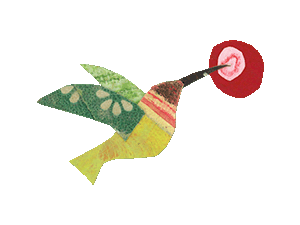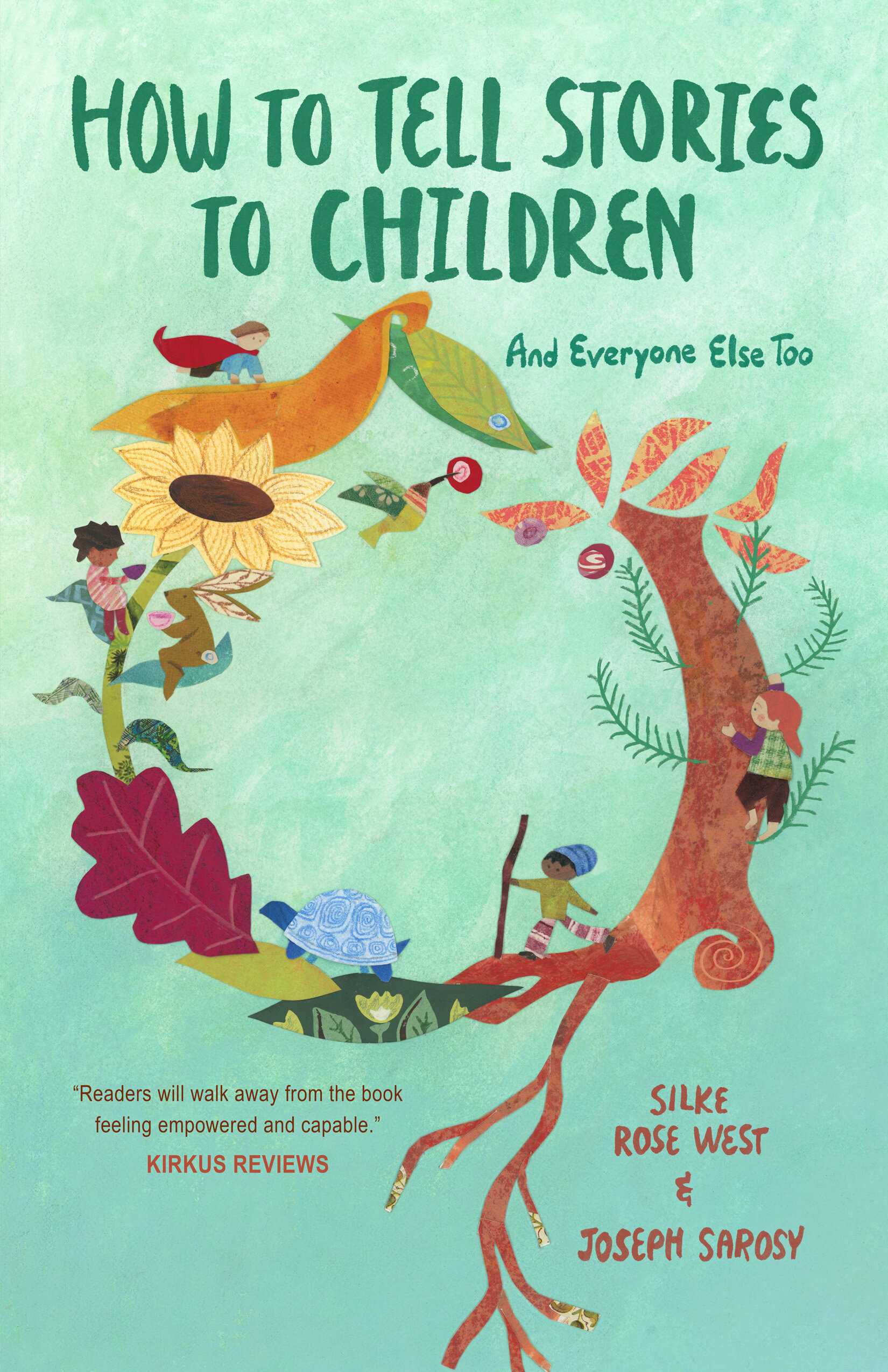Comfort the Bear - A Coronavirus Support Story
Note: We are reaching out to storytellers, parents, and children all over the world to collect stories that bring a little healing and levity to the coronavirus outbreak. We believe families need tools to help children (and parents) deal with the anxiety and cabin fever, not just the virus. Storytelling is a time-tested way to build safety, intimacy, and creativity in the home.
Visit the Coronavirus Storytelling Home Page
To be clear - these stories, articles, and resources are intended to help parents guide young children and ease anxiety in the household after the serious work of preparation has been done. They are not intended to make light of the illness. While this and other stories can be shared directly with children, we believe you will find the greatest comfort in crafting stories of your own with the help of your child.
This story comes from Dr. Joyce Mills, a play therapist who works with storytelling, along with a series of helpful ideas for parents stuck at home. She writes, “I am attaching what I sent to China in response to their request for support during this challenging time. They offered it free to all of their parents to help their children. The responses were very positive.”
Comfort the Bear
Copyright Joyce Mills, Ph.D. LMFT, LLC, Registered Play Therapy Supervisor, Founder: StoryPlay Global, Co-director of The Phoenix Institute of Ericksonian Therapy
www.storyplayglobal.com
Hello, My name is Comfort and I am a very special bear. Now, you may be wondering just how I got my name. Well, this is the story that my mother told to me when I was a very small bear cub and now I’m going to tell it you.
Once upon a time, a long time ago there was a cave deep in the mountains. While inside of this cave, a beautiful, big mother bear gave birth just as the moon was the brightest. All through the winter the mother bear took care of her cub in her own special way. Everything was cozy and perfect; except for only one problem...she couldn’t find the proper name for her cub. Bears are very wise you see, and they know that choosing just the right name is extremely important. Like the nose prints on their faces, each bear is just a little bit different from the other bears.
Well, as the story goes, this mother bear slept and slept, and while she slept she dreamed about her little one who was nestled comfortably right beside her. One day as she was sleeping, a great noise occurred somewhere outside of the cave. The mother bear stirred restlessly in her sleep, but her little cub remained calm and nuzzled close to her warm fuzzy belly. And then something unexpected happened. The mother bear’s restlessness disappeared and she began to feel calm and peaceful, although the unknown noise continued outside. Somehow, even in her sleep, the mother
bear realized that the closer her cub nestled into her soft underbelly, the more comfort and peace she felt inside.
It was the time of awakening when the mother bear gave a deep-bellied sigh and opened her round brown eyes. She looked lovingly at her little cub that remained sleeping restfully beside her and whispered, “My little one, I now know your name. It came to me in my dreamtime. Your name is Comfort. Yes, that’s right. Comfort shall be your name from this day forth.”
When the springtime came, the mother bear lumbered out of her cave with her little cub Comfort right behind her. Once they were outside in the sunlight, the proud mother bear gave a mighty roar and announced the name of her new cub to the whole mountainside. “From this day forth my cub is known as ‘Comfort’ and her purpose in life is to soothe worries and sadness and bring feelings of inner peace and love to all she visits.
Well, that is the story of how I got my name. So here I am, just for You. Remember to hold me close and repeat my name “Comfort,” and the gifts of peace and love I have come to share will be with you always.
Bear Hugs and Kisses,
Comfort the Bear
Children are encouraged to draw a picture of Comfort the Bear after the story.
The following are my responses to requests from China Play Therapy colleagues in their quest to help parents and children. - Dr. Joyce Mills
1. Teach parents how to explain the epidemic to their children. How to explain to our children: We need to stay at home for a long time and even delay returning to school.
Reassure Children
An epidemic is like a sudden & invisible storm. It begins small and then can get stronger for a while as it passes through. It may take a long time until it does. The important thing is to stay safe inside and protected until we hear the message that the storm is over and that it is safe to come out. Sometimes it takes a long time for the storm to pass, so we will be together and stay safe. We can imagine rainbows after the storm is over.
Parents can say, “You know bears hibernate through the winter. They don’t come out until the winter is over and it’s time for Spring. Bears are very smart. We can pretend to be bears. We can even sleep like a bear.”
2. Help children release stress and anxiety, and even fear.
Parents can use the My All Better Book activity - a drawing activity to help children release fear, and reduce stress:
You only need blank paper, crayons or pencils.
Ask your child to:
Draw a picture of their fear, worry, stress
Next, give your child another blank piece of paper and ask him/her to draw a picture of how their fear, worry, or stress looks feeling “all better.”
Next have your child look at both pictures and draw a symbol or something they know would change Picture #1 to Picture #2
Hang the “All Better” picture near their bed or wherever they sleep.
If a child is having nightmares: Superhero to the Rescue
Ask your child to draw a picture of the bad dream
Next, ask them to draw their favorite Cartoon Superhero or someone they know could chase away the bad dream. Draw their “super powers.”
Finally, ask them to draw how the dream looks now with the superhero’s help.
3. If children cry and want to go out to play, how should we explain this to children?
With care and comfort in your voice, reassure your children that it’s like a “sudden invisible storm” so we need to stay safe until the storm is over. Then offer ways to use their imagination to play.
Create a Memory Bottle
Draw a bottle on a blank sheet of paper. Then ask them to draw memories they enjoyed when playing outside. Let them know “we can bring what’s outside inside through our memories.”
Ask them to take three “Magic Happy Breaths” before they begin drawing, letting their memories of the smells, sounds, tastes, feelings, come into their memories. Then draw them on the paper. After they draw or even while they are doing so, they can share their memories.
It's really helpful if you do this activity along with your child if possible. This can help nourish yourselves as parents as well.
4. Under what symptoms should children seek professional psychological support?
When a parent sees extremely unusual behavior such as extreme angry outbursts, sleep problems, eating problems. In all cases, also contact your doctor to make sure your child is well.
5. How can we use this time to improve the parent-child relationship? How do we promote effective and healthy attachment?
Look at baby/family-pictures together. Tell stories related to the photos. Positive memories of birthdays, celebrations, trips/vacations.
Cook together using favorite recipes. Baking cookies, bread, making soup or any other favorite recipe they like. Take turns adding ingredients and mixing. Tell stories about where you learned the recipe…book, grandma, aunty, etc.
Draw pictures of things that make your heart happy. Then tell the stories connected to those things.
Sing songs together, hold and rock little ones.
6. Directly teach parents some effective mini-games to help children through difficult times.
Note: Use readily available materials, as no one can go out and buy things.
Hide and Seek: Use any small object or toy and take turns hiding it someplace in your home/apartment. One hides it and one finds it. This is an easy game if you have more than one child. After hiding the object, count or use a timer to whatever number you feel is reasonable for the age of your child. You can hide two or three things as well. While counting, you or your child looks for the object until it’s found. It’s fun, easy, and you don’t need anything special. Let your child choose the items they want to hide. There is a metaphor in this game as well. We hide, seek and find what is important to us.
My blessings to each of you,
Dr. Joyce Mills
Announcing the 2020 Coronavirus Storytelling Challenge
As politicians and journalists wrestle for control over the story of coronavirus in the media, parents are locked down in a different battle – the story forming in our children’s hearts.
Schools are closing their doors. Parents are feeling anxious. Social distancing and empty shelves have us gasping for normalcy. We need skills for handling the disease, but we also need tools for managing the anxiety that treads in its footsteps.
That’s why we created the 2020 Coronoavirus Storytelling Challenge. As the nation struggles to catch up with the disease, let’s help parents and children connect at home, and take some of the pressure off.
The Storytelling Loop is a newsletter bringing you tips, science, and real-life examples of how storytelling builds the connection between parent and child. It is a joint project of Silke Rose West and Joseph Sarosy, authors of How to Tell Stories to Children. Originally published in August of 2019, a new edition is due out from Houghton Mifflin Harcourt in 2021. You can find more from Joseph Sarosy at Fatherly. Are you involved in storytelling? Join Us.


